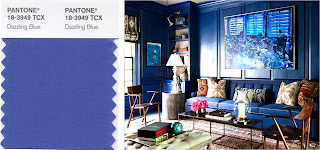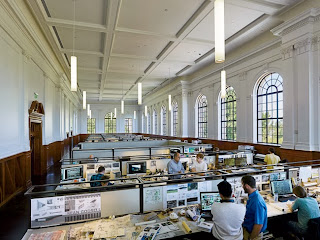Every year, the Pantone team, with the input of select industry influencers and designers, creates the spring and fall color reports. These hues become the foundation for the next Fashion Week or furniture market. Oftentimes, many designers and color-enthusiasts will incorporate the new seasons’ color trends in small ways, like home décor accessories, and on grand scales such as a blast of color to the exterior wall of an architecture firm’s latest design project. Below, we have listed Pantone’s 2014 Spring Color Report and provided a few examples, just to get your creative juices flowing. Enjoy!
 |
| Pantone® Fashion Color Report Spring 2014 |
Cayenne: Spicy, yet not intimidating, Cayenne will add a blast of courage to an otherwise neutrally comfortable space.
 |
| Photo Credit – Better Homes & Gardens |
Celosia Orange: Named after a stunningly unique flower, Celosia Orange’s vibrant and energetic color radiates warmth throughout this contemporary children’s bedroom.
 |
| Photo Credit – Haus Line |
Dazzling Blue: While endearing and bold, Dazzling Blue can be used in small accessories or large furniture pieces. If you truly love this color, splash it on the walls, too!
 |
| Photo Credit – Rue Magazine |
Freesia: Also influenced by a flower, Freesia is sweet and optimistic; this color is great for the innovative workplace, in paint or plant form.
 |
| Photo Credit – The Flowers Avenue |
Paloma: Paloma’s contemporary tone is reflected in this concrete building, and both are sleek and timeless.
 |
| Chapel of St. Peter, Campos de Jordao, Brazil, 1987 |
Placid Blue: The serene nature of Placid Blue makes it a top choice for coastal living. Notice how this shade is used as an accent on the chairs and the bookcase.
 |
| Photo Credit – Willey Desgin, LLC |
Sand: With a name like ‘Sand’, one would typically think of the beach, but here we see how Tom Brady and Gisele Bündchen’s rustic Los Angeles home utilizes this color’s versatility, inside and out.
Hemlock + Comfrey: Hemlock is a much softer pastel and Comfrey is a bit deeper than the 2013 Color of the Year, Emerald. Both shades are meant to add the natural touch of green to round out the 2014 spring color palette appeal.
 |
| Green shades enliven indoor and outdoor spaces. |
Radiant Orchid + Magenta Purple: Radiant Orchid’s bold, chic color is the 2014 Color of the Year; its rich-toned counterpart is just as worthy as it exudes a sense of regality.
 |
| These vibrant purples and an ethnic print create a culturally chic home accent accessory. |
Violet Tulip + Purple Haze: Violet Tulip evokes romance and wistful nostalgia. Purple Haze is a deeper, stronger version of Violet Tulip, but it still has its soft side.
 |
| The blend of these soft violets with the dash of black and Dazzling Blue make a whimsical piece of artwork. |
Be on the lookout for the shades of the Pantone® Color Report Spring 2014 and let us know which are your favorites!




























